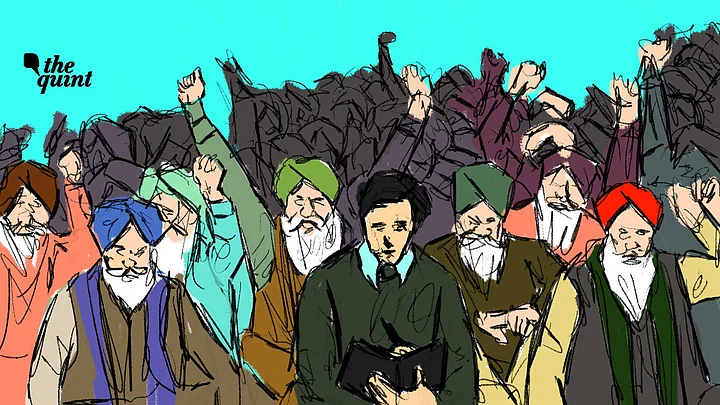Some promises are too good to be true. The year 2022 was set for doubling farmers’ income in India by the Central government. Instead, the gap between the promise and policy has led to the doubling of farmers’ distress. Following are seven factors:
First. The National Statistical and Survey Organisation report (2019) stated that the average monthly income of agricultural households in rural India was Rs 8,337, earned from different sources. The average increase in annual farm income was about 20% in 2002-03 to 2012-13, which had fallen to about 12% in 2012-13 to 2018-19. This is despite the estimated growth rate of agriculture at 4.5%.
Suicides Rose by 18% Among Agricultural Labour
Second. Farmer suicides are a crucial indicator of the condition of farmers and agriculture in India. The National Crime Records Bureau in 2021 revealed that farmer suicides increased in 2020, as compared to 2019. There was also a massive increase of 18% in suicides among agricultural labour, who are left out of schemes such as PM Kisan or Rythu Bandhu. Instead, farmers who own large lands benefit more from these schemes, as seen in Rythu Bandhu in Telangana. Farmer suicides are an indictment of these much-publicised schemes and expose the truth that small and marginal farmers are killing themselves due to falling incomes and increasing debt.
GST and Rising Input Costs
Third. Input costs contribute significantly to expenses and cut down the income of the farmers. They are also an important cause of farm distress and suicides. In 2021, Di-Ammonium Phosphate (DAP) prices were hiked by 58%, a rise that was heavily supported by the industry.
In Budget 2022, a fertiliser subsidy might be considered, especially ahead of the elections in five states, including the agrarian Punjab and Uttar Pradesh. This anticipation has had a positive impact on markets towards stocks of fertiliser companies. Clearly, some non-farmer incomes are certainly getting doubled.
Fourth. The GST on the agricultural sector has both a direct and indirect effect. On agricultural equipment, the GST remains high, from 12% to 18%. For example, the GST on tractors is 12%, which adds to farmers costs. Mechanised agriculture can increase productivity, but that benefit will not transfer to the farmer due to equipment cost. The GST on plastic pipes is 18%, which makes it unaffordable for farmers for irrigation or groundwater access. In a nation where 65% of irrigation is dependent on groundwater, this tax has a serious effect on farm incomes. The slogan ‘more crop per drop’ may translate into ‘no drop no crop’.
Fifth. The imports are tilted against farmers, especially oilseeds. The edible oil import bill has increased by 75%, which makes India one of the largest importers in the world.
This will hurt oilseed farmers, the few who had believed in the government’s promise of crop diversification and moved from foodgrain or cash crops to crops like soybean.
India’s imports may have added to the hike in global prices of edible oil, which could carry forward to consumers at home and impact food prices.
Farmer Caught in Centre-State Politics
Sixth. The paddy procurement conflict between the Centre and state governments revealed the actual crisis in all its various parts. One is the worsening storage crisis at the Food Corporation of India (FCI), which has remained unattended. Then there is the unnecessary politics between the Centre and states, notably Telangana, at the cost of harvested crop lying in the open. Further, farmers were untrained to shift to other crops from food crops.
For example, lakhs of farmers were left without options when the Telangana state government announced it would not procure paddy for the Rabi season. The politics manipulated the farm distress caused to paddy farmers, who are now deep in debt.
Seventh. The farmers’ agitation achieved the repeal of the farm laws and the Prime Minister had promised a committee to examine Minimum Support Price (MSP) and other issues. Fixing the correct MSP goes a long way in improving farmers’ income. However, this committee is yet to be formed, and according to the Government’s ambiguous words, it will be set up ‘very soon in near future’. There is, in other words, no date fixed for one of the most important means of protecting and improving farmers’ income.
To conclude, the Central government will spare no effort in Budget 2022 to establish how earnestly it had sought to double farmers’ income. The Finance Minister will not address the farmers whose debts have increased due to government policies, and whose lives do not improve despite promises. The farmer, as always, will be absent in Parliament, where his/her fate will be decided by those who hold the strings.
(Dr Kota Neelima is author, researcher and Director of Institute of Perception Studies, New Delhi. She writes on rural distress and farmer suicides. She tweets @KotaNeelima.)
(At The Quint, we question everything. Play an active role in shaping our journalism by becoming a member today.)
